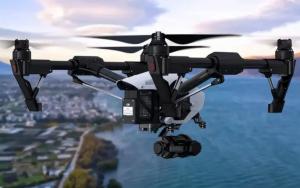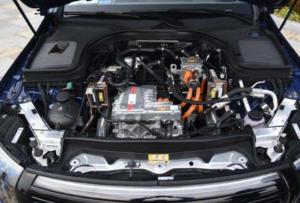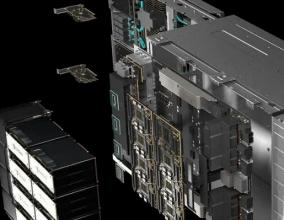数字信号控制器改善了汽车电子中马达的控制性能
来源: 作者: 时间:2007-03-09 15:06
DSCs boost automotive electric motor control
Digital signal controllers combine microcontroller and DSP functionality
on-chip for automotive brushless DC (BLDC) motor applications
By Willie Fitzgerald, Microchip Technology
Mechanically actuated automotive systems, such as power steering
and fuel and water pumps, are being replaced with systems that utilize
electric motor technology. Consequently, the presence of semiconductors
in automobiles is increasing geometrically, in part due to automotive
systems developers' desire for electronic motor control to address
consumer requirements for safer, more efficient cars.
One contingent of the synchronous motor group, brushless direct
current (BLDC) motors, are ideal for automotive applications that
continuously rotate, such as pumps, cooling fans, and stepper motors.
BLDCs equip positioning systems with start and stop functions where
high reliability is required.
Furthermore, the electronic control that BLDC motors offer is critical
to statutory vehicle requirements, including energy-savings, reduced
environmental and emissions impact, and the creation of safer vehicles.
BLDC motors are also useful for variable-speed applications where
space is tight, as in fuel pump control and electronic/electric
power steering. In these types of applications, electronic control
is essential because of the need for fault diagnostics and wide
temperature and voltage operational ranges.
The embedded processor is a critical tool for automotive system
designers as they address the increasing needs and demands of today's
driver. The increased use of electronic controls enables automotive
system designers to meet these needs, while meeting their own requirements
to develop low-cost, low-noise, high-accuracy systems with faster
time-to-market.
A multitude of embedded-processor solutions is available to automotive
design engineers. One single-chip architectural platform that is
ideal for BLDC motor control is the 16-bit digital signal controller
(DSC). This type of platform delivers the control of a microcontroller,
along with the computation and throughput capabilities of a digital
signal processor (DSP). In this way, DSCs are excellent at executing
the complex, high-speed mathematical functions required by many
automotive electronics systems.
DSCs, such as Microchip's dsPIC, offer a seamless migration path
and pin-for-pin compatibility, which enable the re-use of hardware
and software building blocks. This combination of a 16-bit MCU with
DSP capabilities enhances the performance of automotive electronic
systems, while lowering system costs and enabling designers to get
products to market faster.
 The DSC combines MCU control and DSP number crunching functions. 上一篇:微分电路的参数设计
相关文章
资讯排行榜
华强资讯微信号
关注方法: |






